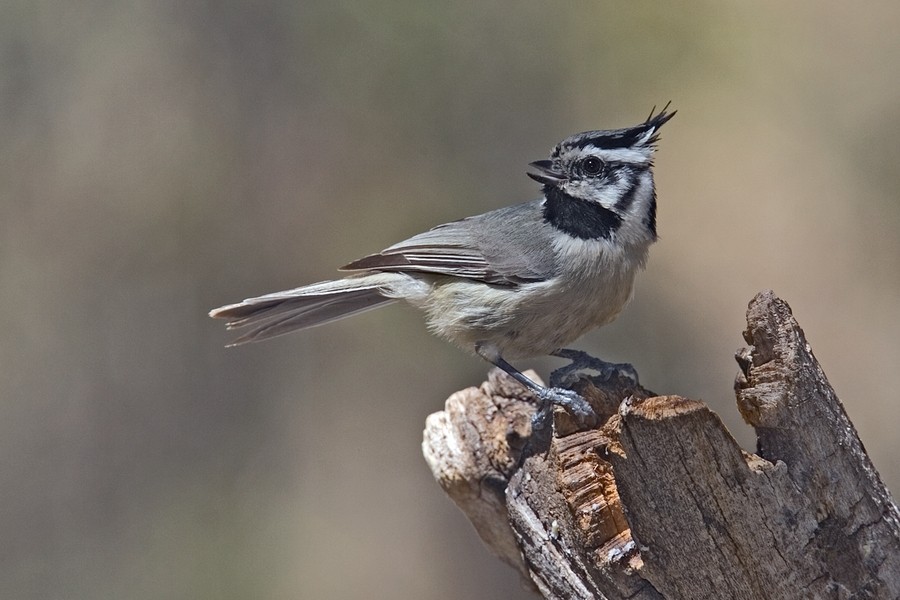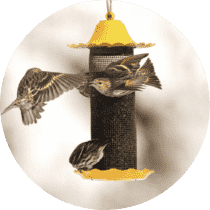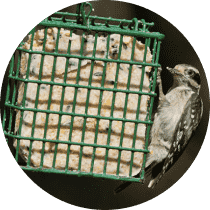Bridled Titmouse
A species of Titmice Scientific name : Baeolophus wollweberi Genus : Titmice
Bridled Titmouse, A species of Titmice
Botanical name: Baeolophus wollweberi
Genus: Titmice
Content
Description General Info
 Photo By www.naturespicsonline.com , used under CC-BY-SA-3.0 /Cropped and compressed from original
Photo By www.naturespicsonline.com , used under CC-BY-SA-3.0 /Cropped and compressed from original Description
The bridled titmouse (Baeolophus wollweberi) is a small songbird, a passerine bird in the tit family Paridae. These birds range from 11.5 – 12.7 cm. (4.5 to 5 in.) long. It is small, crested and gray with a black and white patterned face, a black bib. Its crest is boarded with black and white (sometimes gray) underparts. A standard nest ranges from 5 – 9 eggs colored white, speckled, or reddish brown. Their preferred habitat are oak or oak-juniper mixed woodland riparian areas of mountains in eastern and southeastern Arizona – (the Mogollon Plateau and White Mountains of Arizona), and extreme southwestern New Mexico – (the Madrean sky islands region of the eastern Sonora Desert) in the United States to southern Mexico. They nest in a hole in a tree, either a natural cavity or sometimes an old woodpecker nest found 4 – 28 ft. off the ground. They line the nest with soft materials. Usually built from loose cups of cottonwood down, stems, leaves, and grass. These birds are permanent residents and may join small mixed flocks in winter. They forage actively on branches, sometimes on the ground, mainly eating insects, especially caterpillars, but also seeds, nuts and berries. They will store food for later use. The song is usually described as a whistled pidi-pidi-pidi-pidi. They make a variety of different sounds, most having a similar tone quality. 
Size
10-13 cm (4-5.25 in)
Life Expectancy
1-7 years
Nest Placement
Tree
Clutch Size
4 - 8 eggs
Feeding Habits
Bridled Titmouse predominantly consumes insects, particularly beetles (like weevils), bugs, caterpillars, leafhoppers, and spiders. While foraging, they exhibit acrobatic skills, often hanging upside-down to access prey. They forage in trees' mid-levels, favoring oaks over conifers. In colder weather, pines and junipers are common foraging sites. Besides insects, they also eat seeds, notably acorns, sometimes containing beetle larvae.
Habitat
Bridled Titmouse are typically found in mature woodlands within mountain ranges, favoring environments rife with oak or pine-oak-juniper mixtures. The species thrives in elevations starting around 5,000 feet, particularly amidst key trees like Emory oak, Arizona white oak, and various pines and junipers. Bridled Titmouse also frequents stream corridors lined with cottonwoods, sycamores, and other riparian species. While they mainly breed at higher altitudes, they may descend to lower ones during winter months.
Nest Behavior
Bridled Titmouse starts nest-building with the female predominantly preparing the nest. Egg-laying follows nesting preparation, with vigilant parental care for eggs and chicks, though specific timing and patterns in bridled Titmouse are not detailed here.
Nest Characteristics
Bridled Titmouse prefers nesting in tree cavities or used woodpecker nests, often using nest boxes. Nest sites are elevated, 5+ feet off the ground. Nests are layered with coarse material, grass, and soft leaves, bound with spiderwebs or silk, and adorned with natural fibers and fur. Cavities are 6-18 inches deep and 1.3-4 inches in diameter.
Dite type
Insectivorous
General Info
Feeding Habits
Bird food type
Bird Feeder Type

Small Hopper

Small Tube Feeder

Platform

Suet Cage
Sounds
Call
Recording location: United States
Call
Recording location: United States
Song
Recording location: United States
Behavior
Bridled Titmouse are sociable and exhibit year-round monogamous pair bonding, engaging in activities such as courtship feeding, where males provide food to the females during the breeding season. They are known for their distinct trait of having helpers at the nest, which is rare among their North American family Paridae. These helpers, sometimes males, may also participate in courtship rituals and assist in rearing the young. Post-breeding, bridled Titmouse tend to form mixed-species flocks, leading and serving as sentinels within these groups, alerting others of potential danger with specific calls.
Species Status
Not globally threatened.
Scientific Classification
Phylum
Chordates Class
Birds Order
Perching birds Family
Tits Genus
Titmice Species
Bridled Titmouse